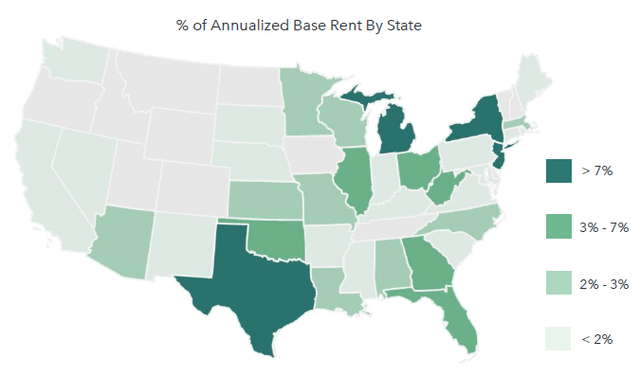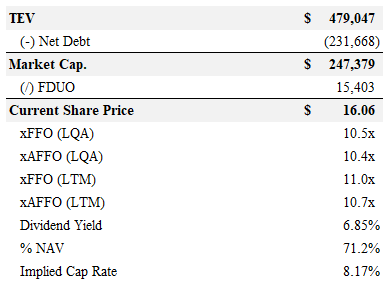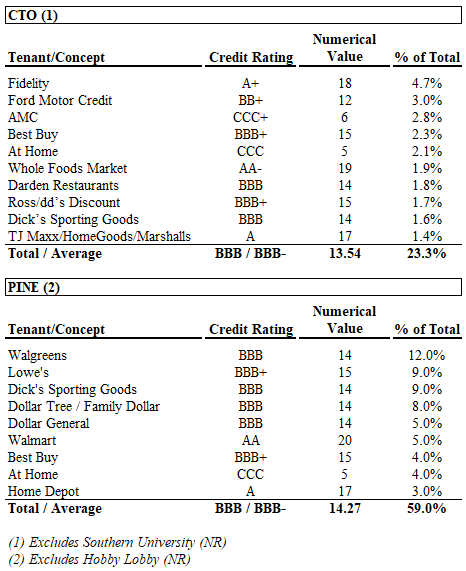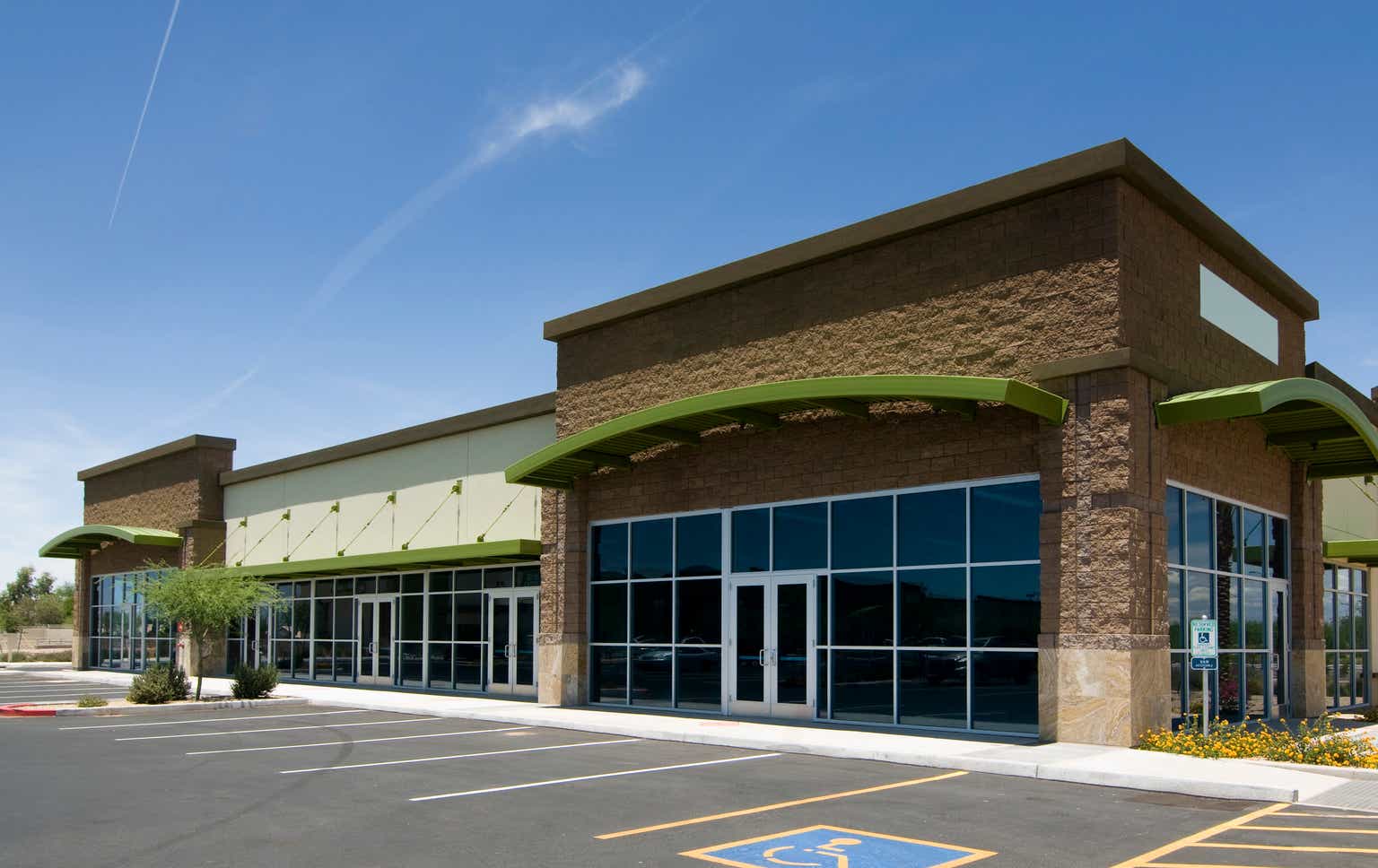Summary
PINE is a growth-focused triple-net retail REIT. It is externally managed by CTO Realty Growth (CTO). While I currently have a Hold rating on CTO, I believe that its valuation is slightly more compelling and offers decent exposure to PINE’s share price and operating performance through its control of the external management agreement and ~15% stake.
Overview
Alpine Income Property Trust (NYSE:PINE) is a REIT that owns and operates a portfolio of 138 net leased (“NNN”) commercial properties located in 103 markets in 35 states. Net lease properties require the tenant to pay or reimburse for property operating expenses such as real estate taxes, insurance, assessments and other governmental fees, utilities, repairs and maintenance and certain capital expenditures. PINE also recently began acquiring and originating commercial loans and investments. Its commercial loan investments are generally secured by real estate or a pledge of the borrower’s ownership interest in entities that own real estate. PINE has no employees and is externally managed by CTO Realty Growth. It was formed on August 19, 2019. On November 26, 2019, PINE closed its IPO.
PINE Geographic Breakdown (PINE)
PINE conducts the substantial majority of its operations through Alpine Income Property OP, LP (the “Operating Partnership”). Its wholly owned subsidiary, Alpine Income Property GP, LLC (“PINE GP”), is the sole general partner of the Operating Partnership. Substantially all of PINE’s assets are held by the Operating Partnership. PINE has a total ownership interest in the Operating Partnership of 89.0%, with CTO holding a 7.9% ownership interest in the Operating Partnership. The remaining 3.1% ownership interest is held by an unrelated third party through the issuance of OP Units as consideration for a portfolio of NNN properties acquired during ’21.
Risks
Bad Debt / Tenant Bankruptcies
During Q3, PINE had 7 Valero-branded convenience store properties vacated by the bankruptcy and liquidation of its tenant, Mountain Express. While management claims the lost revenue is “modest in the context of [its] entire portfolio”, it contributed to its downward revision to the full year ’23 guidance.
Catalysts
Rate Cuts
NNN properties and REITs tend to trade like bond proxies, due to their contractually determined, long-dated cash flows. Therefore, they often have significant duration risk. Interestingly in the case of PINE, is that its shares do not seem to have been hit as drastically as I would have assumed given the movement in interest rate we’ve seen over the last two years. Its yield has only increased by ~100bps since late-2021/early-2022, as shares have declined ~15% despite YTD FFO/AFFO being ~19% lower than the comparable period in ’22. Nevertheless, any future rate cuts would certainly entice yield-seeking investors who appreciate the stability of PINE’s NNN portfolio.
Share Repurchases
In July, PINE approved a $15MM repurchase program. During Q3, it repurchased ~280k shares at a weighted average price of ~$16.78 for total costs of ~$4.7MM. It is highly likely that PINE actively repurchased shares after the share price drop following its Q3 earnings release. Further repurchase activity should support the shares, be accretive to NAVPU, and increase its capacity to raise distributions per share over time.
Valuation
PINE trades at 10.5x / 10.4x LQA FFO / AFFO (n.b., 11.0x / 10.7x LTM FFO / AFFO), ~71% of NAV, an ~8.2% implied cap rate, and ~6.9% yield.
PINE Valuation Overview (Author; PINE)
My NAV estimate for PINE is ~$20.6/share (n.b., 14.8x / 14.6x LQA FFO / AFFO and 15.4x / 15.0x LTM FFO / AFFO), implying ~40% upside. However, given that PINE is externally managed, I believe it will trade at a discount to NAV. I am conservatively using a 10% discount, implying a target price of $20.3/share. A more generous discount of 5% (n.b., I estimate the termination value of CTO’s external management contract, discussed below, is worth ~3.5% of PINE’s NAV) implies a target price of $21.4/share (n.b., ~33% upside).
PINE vs CTO
CTO’s implied cap rate is ~42bps higher than PINE’s (n.b., ~8.6% vs ~8.2%). NNN properties tend to fetch lower cap rates due to their lower operating costs and longer lease terms, so CTO should trade with a higher cap rate. My NAV estimates for each implicitly assumes a 75bps spread between CTO and PINE (n.b., 7.5% and 6.75%, respectively). Given their similar tenant and lease profiles, I see little reason for a wider spread. CTO’s WALT is ~6 years vs ~7 years for PINE. Their top 10 tenants both have weighted average credit ratings of ~BBB (n.b., weighted by cash ABR contribution and based on the standard numerical transformation for the S&P ratings scale). The apparent weakness in this analysis is that CTO’s top tenants only account for ~23% of cash ABR vs 59% for PINE. PINE claims 64% of its tenants are IG-rated, whereas CTO does not report this metric. In all likelihood, PINE has a more creditworthy tenant base than CTO, but I see no reason to believe it is a material difference.
PINE vs CTO Tenant Credit Quality (Author; PINE; CTO)
Although PINE is marginally cheaper than CTO on a P/NAV basis (n.b., ~71% vs ~75% for CTO), I believe PINE should and will trade at a discount to NAV as it is externally managed. Assuming a 10% discount to NAV, I see ~33% upside for CTO vs ~26% for PINE. A further consideration is the relative growth profile of the two. CTO has ~15% of its leases, measured by cash ABR, expiring through ’25 vs only ~6% for PINE. Considering CTO saw leasing spreads of +11% in Q3 (n.b., excluding the impact of the Ashford Lane food hall backfill), I believe this will equate to greater organic growth for CTO than PINE.
A further consideration is that CTO owns the external management agreement for PINE, in addition to a ~15% equity stake. Removing PINE from CTO’s NAV entirely would mean that you can buy CTO at an implied cap rate of ~8.2% on its core portfolio and get its ~15% stake in PINE (n.b., ~$37MM) and my estimated FMV of the management contract (n.b., ~$12MM based on the last 24 months’ average fee income multiplied by the termination multiple of 3x) for free. CTO’s yield is ~9.1%, ~230bs higher than PINE at ~6.9%. This is meaningful, as a re-rating will take time for both, given their respective bad debt/vacancy issues.
Given these concerns, I see little reason to own PINE directly. I’d prefer to own it through CTO. One consideration that might predispose one to prefer PINE is leverage, though I don’t believe there is a sufficient difference to change my mind. CTO’s leverage is ~7.6x EBITDA (LQA), or 8.7x, including the pref. PINE’s leverage is slightly lower at ~7.1x.
Conclusion
Since its creation as a spin-off of CTO’s NNN assets, PINE has grown its portfolio from 20 properties across 12 states to 138 properties in 35 states. The carefree nature of its NNN portfolio, long-dated lease and debt maturity profile, and largely investment-grade tenant base make it a defensive pick within the retail REIT space. It does appear undervalued at current prices; however, I see CTO as a better option to gain exposure to PINE’s performance along with a similar portfolio at a better price. That said, I currently have a Hold rating on CTO (which you can read about here). I have also given PINE a Hold rating as I believe that its recovery could be delayed by its bad debt/vacancy issues (similar to CTO) and to reflect my belief that CTO is the best way to own it.
Read the full article here












